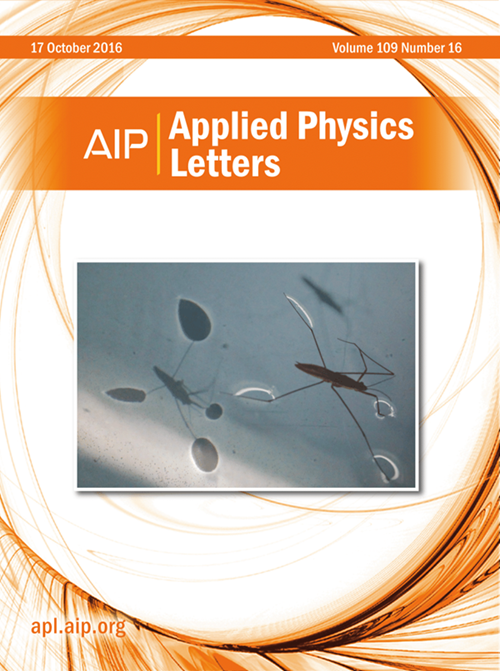VIA基团官能化Janus MXene单层的宽ph值光催化剂
IF 3.5
2区 物理与天体物理
Q2 PHYSICS, APPLIED
引用次数: 0
摘要
基于第一性原理计算,我们对Janus MXene Y2COX (X = O, S, Se)单层膜的光催化性能进行了系统的研究。我们的研究结果表明,Y2COX单层膜具有特殊的光催化整体水分解能力。得益于Janus结构的不对称性和表面末端原子的差异,Y2COS和Y2COSe单层分别产生高达8.7 × 109和8.4 × 109 V/m的内嵌电场(Eint),显著促进了光生电子-空穴对的有效分离。此外,Y2COX单层膜具有宽带隙和高静电电位差(ΔΦ),能够在宽pH范围(pH = 0-14)内实现高效的光催化水分解。此外,这些单层膜在可见光区表现出出色的光学吸收特性,最大吸收系数高达7.12 × 105 cm−1。该研究为开发具有广泛pH适应性的光催化整体水分解材料提供了重要的理论见解。本文章由计算机程序翻译,如有差异,请以英文原文为准。
Broad-pH-value photocatalyst of Janus MXene monolayers functionalized with group VIA elements
Based on first-principles calculations, we conducted a systematic investigation into the photocatalytic performance of Janus MXene Y2COX (X = O, S, Se) monolayers. Our findings reveal that Y2COX monolayers exhibit exceptional photocatalytic overall water splitting capabilities. Benefiting from the asymmetry of the Janus structure and the differences in surface-terminated atoms, Y2COS and Y2COSe monolayers generate built-in electric fields (Eint) as high as 8.7 × 109 and 8.4 × 109 V/m, respectively, significantly promoting the effective separation of photogenerated electron–hole pairs. Additionally, Y2COX monolayers possess wide bandgaps and high electrostatic potential differences (ΔΦ), enabling efficient photocatalytic water splitting across a broad pH range (pH = 0–14). Furthermore, these monolayers exhibit outstanding optical absorption properties in the visible region, with a maximum absorption coefficient of up to 7.12 × 105 cm−1. This study provides important theoretical insights for developing photocatalytic overall water splitting materials with wide pH adaptability.
求助全文
通过发布文献求助,成功后即可免费获取论文全文。
去求助
来源期刊

Applied Physics Letters
物理-物理:应用
CiteScore
6.40
自引率
10.00%
发文量
1821
审稿时长
1.6 months
期刊介绍:
Applied Physics Letters (APL) features concise, up-to-date reports on significant new findings in applied physics. Emphasizing rapid dissemination of key data and new physical insights, APL offers prompt publication of new experimental and theoretical papers reporting applications of physics phenomena to all branches of science, engineering, and modern technology.
In addition to regular articles, the journal also publishes invited Fast Track, Perspectives, and in-depth Editorials which report on cutting-edge areas in applied physics.
APL Perspectives are forward-looking invited letters which highlight recent developments or discoveries. Emphasis is placed on very recent developments, potentially disruptive technologies, open questions and possible solutions. They also include a mini-roadmap detailing where the community should direct efforts in order for the phenomena to be viable for application and the challenges associated with meeting that performance threshold. Perspectives are characterized by personal viewpoints and opinions of recognized experts in the field.
Fast Track articles are invited original research articles that report results that are particularly novel and important or provide a significant advancement in an emerging field. Because of the urgency and scientific importance of the work, the peer review process is accelerated. If, during the review process, it becomes apparent that the paper does not meet the Fast Track criterion, it is returned to a normal track.
 求助内容:
求助内容: 应助结果提醒方式:
应助结果提醒方式:


